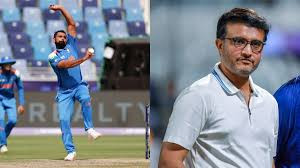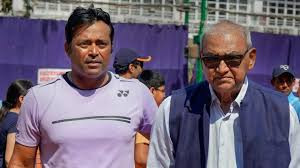“Michael Clarke Battles Skin Cancer, Shares Personal Update and Health Reminder to Fans”

IIE DIGITAL DESK : Michael Clarke, the celebrated former Australian cricket captain, revealed that he is undergoing treatment for skin cancer following another successful surgical removal of a lesion from his nose. He posted an Instagram update emphasizing the harsh reality of the disease—particularly in sun-drenched countries like Australia—and urged followers to prioritize regular skin checkups. Clarke expressed deep gratitude to his doctor, Dr. Bish Soliman, for catching the lesion early, acknowledging that early detection was critical to his treatment outcome.
The procedure marks the sixth surgical intervention Clarke has had for skin cancer, as previously. This revelation adds to a long-standing personal battle: he was first diagnosed back in 2006, and in 2023, he partnered with the Australian Skin Cancer Foundation to promote skin health awareness through regular full-body screenings.
Clarke’s cricketing legacy remains illustrious. From 2004 to 2015, he played 115 Tests, 245 ODIs, and 34 T20 Internationals. Known for his elegant technique, strategic captaincy, and gritty leadership, he led Australia to a 5–0 Ashes sweep in 2013–14 and captained the victorious 2015 World Cup side. In his Instagram post, his words conveyed both urgency and optimism: “Skin cancer is real! Especially in Australia. Another one cut out of my nose today. A friendly reminder to get your skin checked. Prevention is better than cure but in my case, regular check-ups and early detection is key. So grateful that @drbishsoliman_ got it early.”
Clarke’s candid disclosure serves not only as an update on his own health but a broader public health advisory. In Australia—one of the highest skin cancer prevalence regions—two-thirds of Australians will face some form of skin cancer in their lifetime, largely due to prolonged UV exposure and a fair-skinned population. Clarke’s message underscores the importance of sun safety, early diagnosis, and medical vigilance. Reports note that skin cancer, particularly basal and squamous cell variants, remains highly treatable if detected early.
Clarke’s transparency is especially resonant given his influence as a former elite athlete and public figure. His history of health advocacy—through past ambassadorships and public messaging—adds depth to his current campaign. In 2019, he had a lesion removed from his forehead; this ongoing battle across nearly two decades makes his continued resilience all the more inspiring .
For his fans, fellow athletes, and the broader public, the takeaway is unmistakable: early detection saves lives. Clarke’s experience, firmly rooted in a high-risk environment, reminds us that prevention and routine medical attention are critical, regardless of one’s status or lifestyle.
You might also like!
















